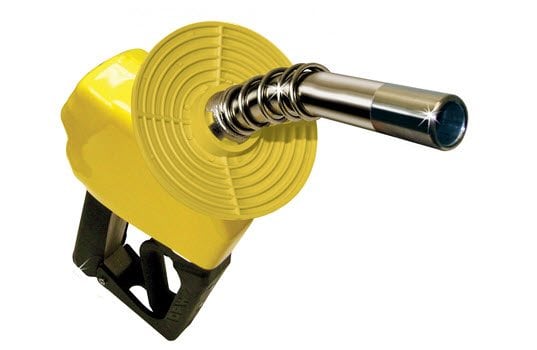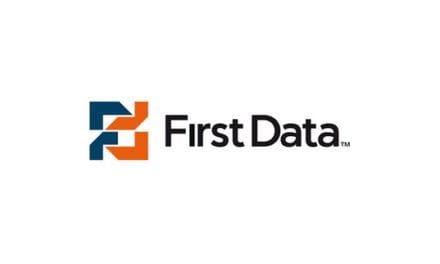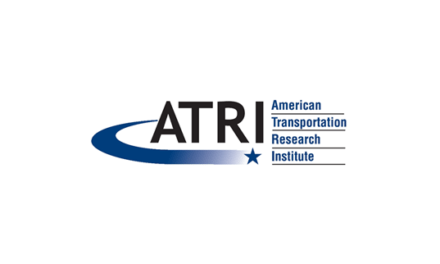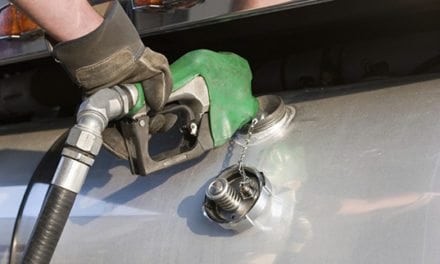By Matt Lauber, Product Manager for OPW
There’s little doubt that the “golden age” of fueling-nozzle design occurred in the 1940s and 1950s. It was in that period when a series of engineers, including Leonard H. Duerr of OPW Fueling Components, began playing a game of “can you top this” in regard to fuel-nozzle development. The result was the development and introduction of the “automatic filling nozzle,” which remains the foundation for fuel-nozzle operation to this day.
Though the landmark development in fuel-nozzle operation occurred more than 60 years ago, that doesn’t mean that a series of more subtle evolutionary changes haven’t continued to take place in recent years. Here’s a quick look at some of the highlights:
Alternatives For Alternative Fuels
One of the biggest challenges for nozzle designers in the modern age is creating equipment that is compatible with the numerous alternative fuels that are now coming into the market, such as Ethanol in its E15 and E85 concentrations, and biodiesel. Specifically, testing must be done to ensure that the nozzle’s metal, seal, rubber and plating components are compatible with alternative fuels.
For example, when talking about Ethanol and E85, traditional nozzle metals like zinc, brass, lead and aluminum are not compatible, while stainless steel, unplated steel and bronze do perform well with the fuel. Popular non-metallic materials like natural rubber, polyurethane and polyvinyl chloride (PVC) degrade when they come in contact with Ethanol blends, but neoprene rubber, Viton®, PTFE (Teflon®) and Buna-N are compatible.
Identifying compatible materials of construction is just one piece of the equation, though. Once those materials are found, the question of cost enters the conversation. Meaning that the best combination of materially compatible components and cost must be found in order to keep the nozzle affordable for both the fueling-site operator and customer.
Enhancing The Customer Handshake
With the prevalence of pay-at-the-pump technology, a growing number of fueling transactions are taking place solely at the fuel island, with no need for the customer to have any interaction with on-site personnel. That makes it imperative that the at-the-pump fueling experience be as pleasant and effective as possible. It also means that grabbing the fuel nozzle out of its holster is the “handshake” that the customer has with the site operator.
That handshake is a lot less palatable if the nozzle is dirty or appears to be damaged. While standard nozzles haven’t changed in appearance much in at least 30 years, there are ways to make them appear fresh and new. Many nozzle manufacturers now offer Hand Insulators and Splash Guards to enhance the customer experience. These colorful rubber components improve the feel and durability of the nozzle, and won’t deform or crack in cold weather, all while providing a more pleasant fuel-dispensing experience.
Hand insulators and splash guards are available in a wide array of colors, which makes it easy to create color schemes that coincide with the fueling site’s brand-image program. Soiled insulators are also easy to replace without the need to remove the nozzle from the fueling hose.
Safety First
Providing a safe fueling experience is the overriding concern for fuel-site operators. Fuel spills that result from nozzles that don’t halt product flow when required can lead to a potentially dangerous situation—and a customer that likely won’t return to that fueling location.
To help ensure that accidental releases of fuel in the forecourt do not occur, OPW, for example, has developed Accu-Stop® flow-control technology. Specifically, the Accu-Stop nozzle will shut off if it were to tip above horizontal (as would occur if the nozzle were to fall out of the vehicle). If the nozzle is flowing when it comes out of the fill pipe, it will automatically shut off, thereby preventing a large amount of fuel from being spilled, which eliminates potential personal, economic and environmental hazards.
Weathering the Weather
The winter of 2013-14 was an historic one in both its endurance and several prolonged spells of extremely cold temperatures. The temperatures reached such extremes, especially in the northern United States and throughout Canada, that there were many instances that nozzles rated for use to -40ºF (-40ºC) were actually asked to perform in those conditions.
Much like fuels will have different performance characteristics at such extremes, so will the nozzles that are used to dispense them. To help guarantee nozzle performance in even the coldest of conditions, OPW, for example, has developed a line of Extreme Cold Weather nozzles, which is rated for performance in temperatures as low as -65ºF (-54ºC).
Determining Replaceability
Many nozzle brands now feature a “Replace By” date on their handles. It’s a fact of life: nozzles are a mechanical device with various moving components, meaning that they will eventually break down or wear out and need to be replaced. It is impossible to come up with a specific date when a nozzle needs to be replaced since so many variables are involved in its usage, things from the number of pumping cycles experienced to the amount of overall abuse it takes during fueling operations. It goes without saying that nozzles at stations that pump 100,000 gallons of fuel per month are in danger of wearing out before one that pumps only 10,000 gallons per month.
Therefore, the “Replace By” date should be treated as a type of checks and balances for the site operator. If the nozzle has been in the field for a number of years, it needs to be inspected to make sure it is still working properly and safely. It may still be operating perfectly, but the inspection will help to reinforce the fact that is doesn’t need to be replaced.
Conclusion
While the landmark technological advancements in nozzle design and operation took place more than six decades ago, the evolution of nozzle technology continues, though in much more subtle ways. That being said, the fuel nozzle still remains the ultimate handshake with the customer and all advancements in its operation are just another way of ensuring that that handshake continues to signify a safe, reliable and pleasing fueling experience.
Matt Lauber is a Product Manager for OPW, based in Cincinnati, OH, USA. He can be reached at [email protected] or (513) 870-3307. OPW is leading the way in fueling solutions and innovations worldwide. OPW delivers product excellence and the most comprehensive line of fueling equipment and services to retail and commercial fueling operations around the globe. OPW has 1,650-plus employees with manufacturing operations in North America, Europe, Brazil, China and India and sales offices around the world. OPW is an operating company within the Fluids market segment of Dover Corporation (NYSE: DOV). For more information on OPW, please go to www.OPWGlobal.com.









